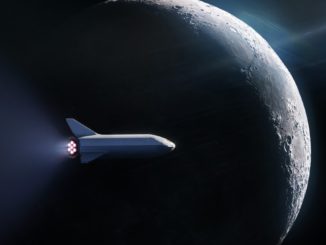The European Space Agency (ESA) has significantly refined the predicted trajectory of comet 3I/ATLAS, originally discovered on July 1, 2025. Using advanced observational data collected from its ExoMars Trace Gas Orbiter (TGO), ESA has improved the accuracy of the comet’s projected path by a factor of ten.
Astronomers worldwide have been closely monitoring 3I/ATLAS since its discovery as it travels through the solar system. This comet is particularly notable as it is the third known interstellar object to be identified, following in the footsteps of Oumuamua and 2I/Borisov. The ability to accurately predict its trajectory is vital for both scientific research and for understanding the dynamics of interstellar objects.
Innovative Use of Data from Mars
The ESA’s ExoMars TGO has played a crucial role in this achievement. Launched in March 2016, the TGO is designed to study the Martian atmosphere and surface. However, its capabilities have extended beyond its primary mission, allowing scientists to gather valuable data on distant celestial objects. By analyzing the light reflected from 3I/ATLAS, astronomers have been able to make precise calculations regarding its speed and trajectory.
This refined data has implications not only for the study of comet 3I/ATLAS but also for future observations of other interstellar objects. Understanding the behavior and composition of such comets can provide insights into the formation and evolution of our solar system. The enhanced predictions may also assist in planning potential future missions or observations that could yield further discoveries.
The Path Ahead
As 3I/ATLAS continues its journey, ESA and other space agencies remain vigilant in their observations. The comet is expected to offer a unique opportunity for researchers to study materials that have traveled across the galaxy. Its trajectory will bring it closer to the Sun, providing a chance to observe changes in its composition and behavior.
The collaboration between ESA and the astronomical community underscores the importance of international efforts in space exploration. The accurate predictions made possible by the TGO highlight the potential for advanced technology to enhance our understanding of the universe.
In summary, the ESA’s successful use of data from the ExoMars TGO has greatly improved predictions about comet 3I/ATLAS’s path. As scientists prepare for its continued journey, the findings hold promise for future astronomical research and the ongoing exploration of our solar system’s mysteries.







